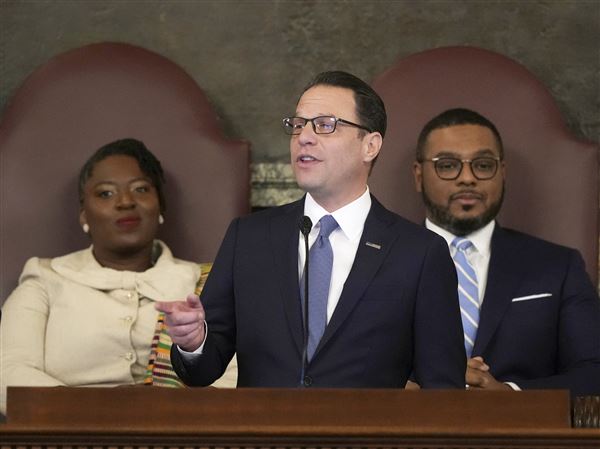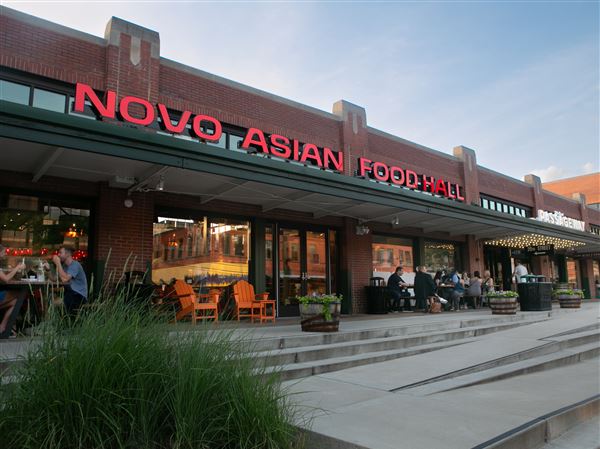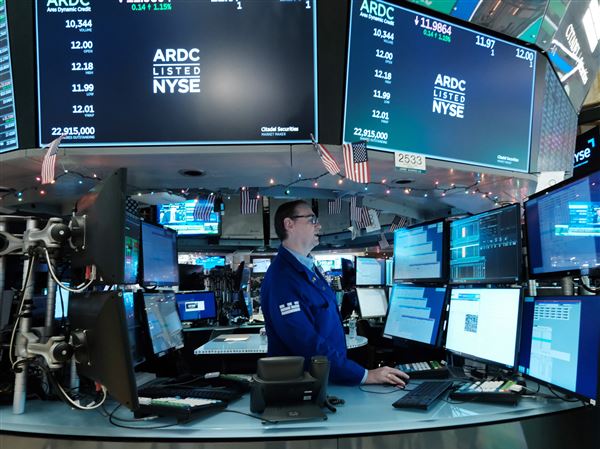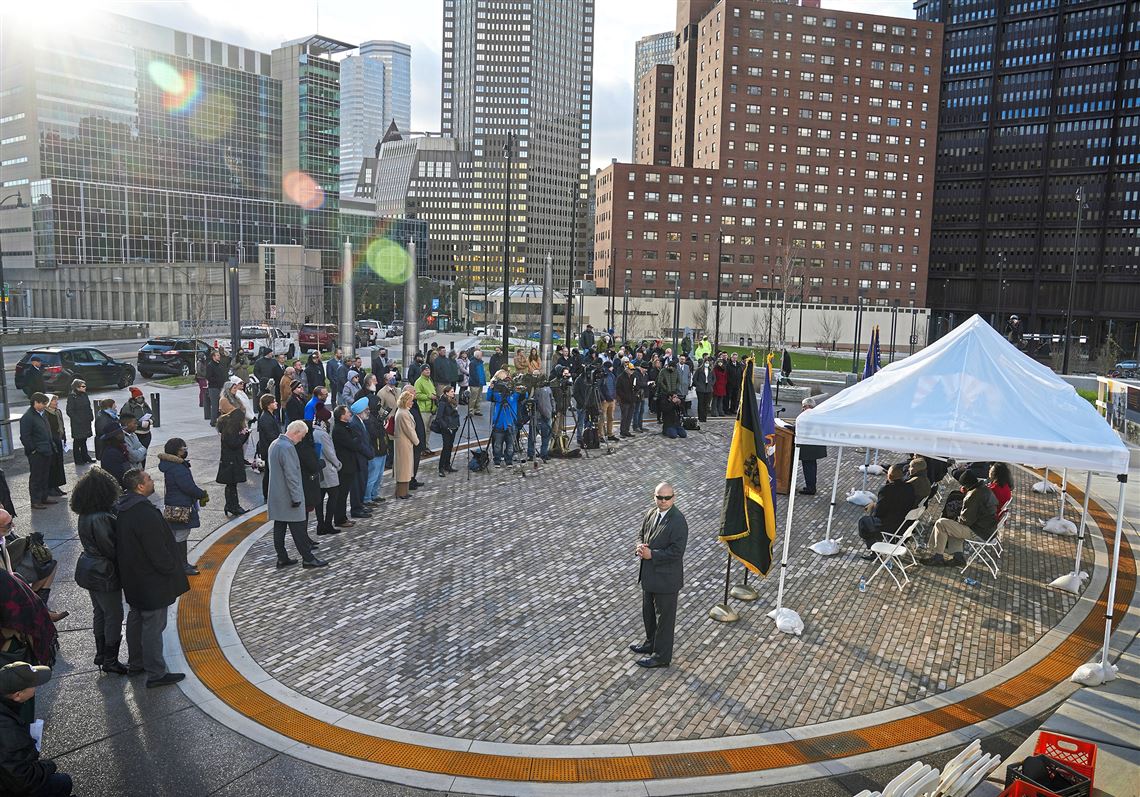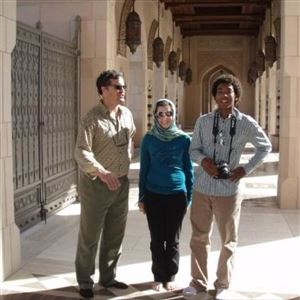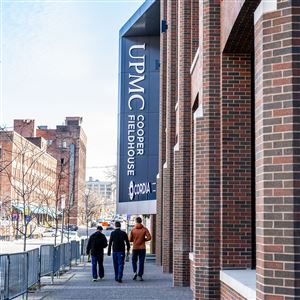It's taken more than 12 years of planning and construction, and November may not be the ideal finishing time, but Pittsburgh officials were thrilled Monday with the dedication of the new urban park that connects the Hill District to the Golden Triangle by putting a three-acre roof on Interstate 579.
The $29.3 million park, named Frankie Pace Park last week after the late Hill District businesswoman and activist, features serpentine walking paths, large lawns, space for outdoor classrooms and neighborhood artwork. It was designed to reconnect the two neighborhoods after the city's construction of the former Civic Arena in the late 1950s — which Pace tried to stop — separated them and many say damaged the once-thriving Hill business district.
“Sometimes it takes a little while to correct an injustice,” said state Sen. Jay Costa, D-Forest Hills, and Senate Minority Leader. “We are rectifying an injustice today.”
Mr. Costa was among more than a half-dozen elected officials and community leaders to speak at the ribbon-cutting ceremony, including Gov. Tom Wolf and U.S. Rep. Mike Doyle, D-Forest Hills. To a person, they spoke about how the Hill District was among dozens of neighborhoods that were divided as part of the construction of the interstate highway system championed by the Eisenhower administration.
Mr. Doyle told how the community started seeking funding in 2009 and eventually worked directly with former U.S. Transportation Secretary Anthony Foxx to get a $19 million federal grant in 2016 to help fund the project. That persistence shows how important the project is, he said.
“This is not just about the park,” Mr. Doyle said. “It’s about transformation of the entire region.”
In addition to the park, there are plans for as much as $1 billion in private development on 28 acres of land where the former arena once stood. That will include offices, a 6,000-seat music venue, housing and restaurants.
The park rises from Chatham Street, across from the Double Tree by Hilton Hotel & Suites, between Centre and Seventh avenues to Washington Place. Terraced steps from Chatham are framed on both sides at each landing by gardens.
A straight path that bisects the site from Seventh to Centre has serpentine sidewalks that join from several points to offer entry from all sides, and red benches are scattered in small groups throughout the site. One area is set up as a garden classroom, with seating on the terraced walls around it; another has the open spiral end of a drainage system that captures water throughout the site.
The park also is filled with colorful small art towers and inspirational sayings on plaques, such as the African proverb, “Milk and honey have different colors, but they share the same house peacefully.” It also features mini-profiles of prominent Black Pittsburghers such as Pace and Martin Delany, a physician, abolitionist and journalist who later served as an officer to recruit Black soldiers for the Union army.
Mayor Bill Peduto remembered stories of his aunt walking down Wylie Avenue from the Hill District to her job at the Chamber of Commerce, something no longer possible after the Civic Arena was built. He called the park an attempt to “correct the mistake created so many years ago.”
Councilman Daniel Lavelle, who represents the neighborhood, remembered the series of meetings with Mr. Foxx to try to secure funding. The secretary wasn’t convinced the project should be considered a transportation issue rather than as an economic development effort, especially since there was no other project like it across the country.
Through a meeting in Pittsburgh, Mr. Lavelle said, the secretary “came to understand the importance of the project to the neighborhood” and awarded the federal grant. The Sports & Exhibition Authority, which owns the site, cobbled together a series of state, local and foundation grants to complete funding for the project.
Mr. Lavelle said it’s fair to consider the park “a down payment” for revitalization of all parts of the Hill District that should come from redevelopment of the Civic Arena site as well as community improvement grants from the Penguins. The team owns the development rights for the arena site, which currently has mounds of dirt piled across from the park as contractors prepare for the first office building there.
“We’re really excited about what’s going to happen across the street,” said Allegheny County Councilman DeWitt Walton.
Contractor Joseph B. Fay Co. and its subcontractors faced challenges over the past 27 months building the new park above an active interstate highway, working mostly at night to install 42 caissons 35 feet underground and placing 126 support beams. They needed that structure to support more than 1,500 cubic yards of concrete to create the cap — including a waterproof membrane to keep water from falling into the highway — before hauling in dirt to create the park setting.
Ed Blazina: eblazina@post-gazette.com, 412-263-1470 or on Twitter @EdBlazina.
First Published: November 22, 2021, 10:06 p.m.



